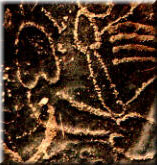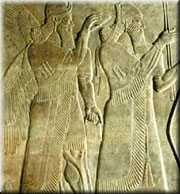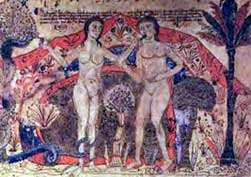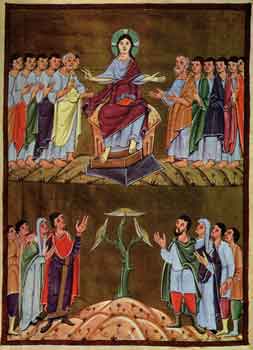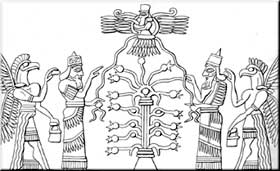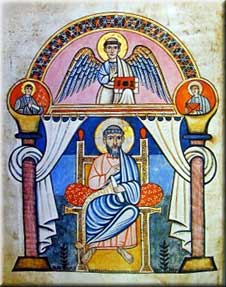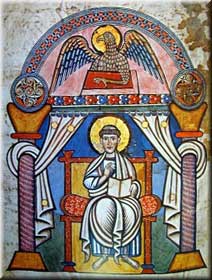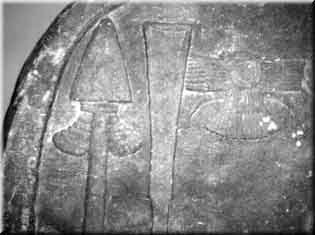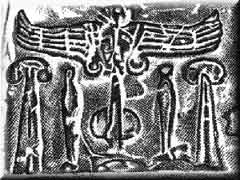As cited and cued in the article
Conjuring Eden:
Art and the Entheogenic Vision of Paradise
Entheos: Vol. 1 Issue 1, Summer 2001.
By Carl A.P. Ruck, Blaise D. Staples, Mark Hoffman
Images 1-10
Jump to images 1-10, 11-20,
21-30, 31-40, 41-47
[1] Etchings in sandstone, radiocarbon
dated to 5600 BC, near El-Hosh in the Nile valley quite probably depict mushrooms
in their phalloid state.
[2] Assyrian bas-relief from the
palace of King Ashurnasirpal at Nimrud, the King with a Genie, Hood Art Museum,
Dartmouth College.
[3]
Assyrian cylinder seal (drawing), with the Tree represented by pomegranate-poppies,
with attendant Genies with pails of unguent and pine cones pollinating the king.
From the early Neo-Assyrian Period.
[4] Assyrian cosmic pillar, bas-relief,
Oriental Museum, Istanbul.
[5] Hittite
royal seal, Cylinder seal.
(from Toads and Toadstools, Adrian Morgan 1995)
[6] Exultet roll, Monte
Cassino monastery, dated 1075.
[7] St. Matthew enthroned, Canterbury
Codex Aureus, c. 750 (Stockholm).
[8] Compare St. John enthroned, Canterbury
Codex Aureus.
[10]
Gospel Book of Otto III: The Sermon on the Mount, Reichenau, 1010. Folio 34,
Verso, CLM. 4453, Staatsbibliothek, Munich.
[9]
Codex Aureus and mushroom details.
